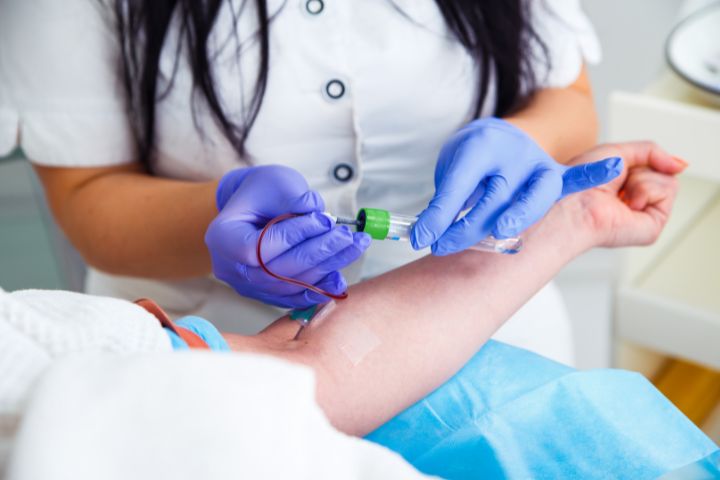Getting My Northeast Medical Institute - New Haven Campus Phlebotomy Course & Cna Class To Work
Getting My Northeast Medical Institute - New Haven Campus Phlebotomy Course & Cna Class To Work
Blog Article
8 Easy Facts About Northeast Medical Institute - New Haven Campus Phlebotomy Course & Cna Class Explained
Table of ContentsOur Northeast Medical Institute - New Haven Campus Phlebotomy Course & Cna Class IdeasNortheast Medical Institute - New Haven Campus Phlebotomy Course & Cna Class Things To Know Before You Get ThisSome Of Northeast Medical Institute - New Haven Campus Phlebotomy Course & Cna ClassSome Ideas on Northeast Medical Institute - New Haven Campus Phlebotomy Course & Cna Class You Need To KnowThings about Northeast Medical Institute - New Haven Campus Phlebotomy Course & Cna ClassA Biased View of Northeast Medical Institute - New Haven Campus Phlebotomy Course & Cna Class
The usage of such tools must be accompanied by various other infection prevention and control methods, and training in their usage.For settings with low resources, price is a driving consider procurement of safety-engineered tools - CNA Courses. Where safety-engineered tools are not offered, competent use of a needle and syringe is acceptable. Unintended exposure and certain information regarding an incident should be taped in a register. Support solutions must be promoted for those that go through accidental exposure.
labelling); transport conditions; interpretation of results for medical monitoring. In an outpatient division or center, offer a specialized phlebotomy work area containing: a tidy surface with two chairs (one for the phlebotomist and the various other for the person); a hand clean container with soap, running water and paper towels; alcohol hand rub. In the blood-sampling space for an outpatient department or facility, give a comfortable reclining couch with an arm rest.
The Best Strategy To Use For Northeast Medical Institute - New Haven Campus Phlebotomy Course & Cna Class
Make sure that the signs for blood sampling are plainly defined, either in a created procedure or in documented guidelines (e.g. in a research laboratory form). Whatsoever times, adhere to the strategies for infection prevention and control noted in Table 2.2. Infection avoidance and control practices. Collect all the devices required for the treatment and area it within secure and easy reach on a tray or trolley, ensuring that all the products are clearly visible.
Introduce on your own to the patient, and ask the patient to specify their full name. Check that the research laboratory kind matches the individual's identification (i.e. match the individual's details with the laboratory type, to ensure precise identification).
Make the client comfortable in a supine placement (if possible). The patient has a right to reject an examination at any type of time before the blood tasting, so it is crucial to ensure that the patient has comprehended the procedure - PCT Training.
The Of Northeast Medical Institute - New Haven Campus Phlebotomy Course & Cna Class
Extend the individual's arm and check the antecubital fossa or lower arm. Situate a blood vessel of a great size that is visible, straight and clear.
DO NOT place the needle where blood vessels are drawing away, since this boosts the possibility of a haematoma. The blood vessel should show up without applying the tourniquet. Situating the capillary will certainly assist in determining the appropriate size of needle. Use the tourniquet concerning 45 finger sizes over the venepuncture site and re-examine the vein.
Haemolysis, contamination and existence of intravenous liquid and medicine can all change the results (39. Nursing staff and medical professionals may access main venous lines for specimens following procedures. Samplings from central lines carry a threat of contamination or incorrect laboratory examination results. It is acceptable, however not perfect, to attract blood specimens when initial introducing an in-dwelling venous tool, before attaching the cannula to the intravenous fluids.
Not known Incorrect Statements About Northeast Medical Institute - New Haven Campus Phlebotomy Course & Cna Class
Permit the location to completely dry. Failing to permit adequate contact time enhances the danger of contamination. DO NOT touch the cleaned website; in certain, DO NOT position a finger over the blood vessel to lead the shaft of the exposed needle. It the site is touched, repeat the disinfection. Perform venepuncture as follows.
Ask the person to create a clenched fist so the capillaries are a lot more noticeable. Go into the capillary quickly at a 30 degree angle or less, and proceed to introduce the needle along the vein at the most convenient angle of entrance - PCT Classes. When sufficient blood has been gathered, launch the tourniquet BEFORE taking out the needle
The smart Trick of Northeast Medical Institute - New Haven Campus Phlebotomy Course & Cna Class That Nobody is Discussing
Take out the needle delicately and use gentle pressure to the site with a clean gauze or dry cotton-wool sphere. Ask the patient to hold the gauze or cotton wool in location, with the arm prolonged and increased. Ask the person NOT to flex the arm, since doing so creates a haematoma.
The Buzz on Northeast Medical Institute - New Haven Campus Phlebotomy Course & Cna Class
Do not push the syringe bettor because extra stress enhances the threat of haemolysis. Where feasible, maintain the tubes in a shelf and move the rack towards you. Infuse downwards right into the suitable coloured stopper. DO NOT eliminate the stopper since it will release the vacuum cleaner. If the sample tube does not have a rubber stopper, infuse very slowly right into television as reducing the stress and rate utilized to move the specimen reduces the danger of haemolysis.

Report this page